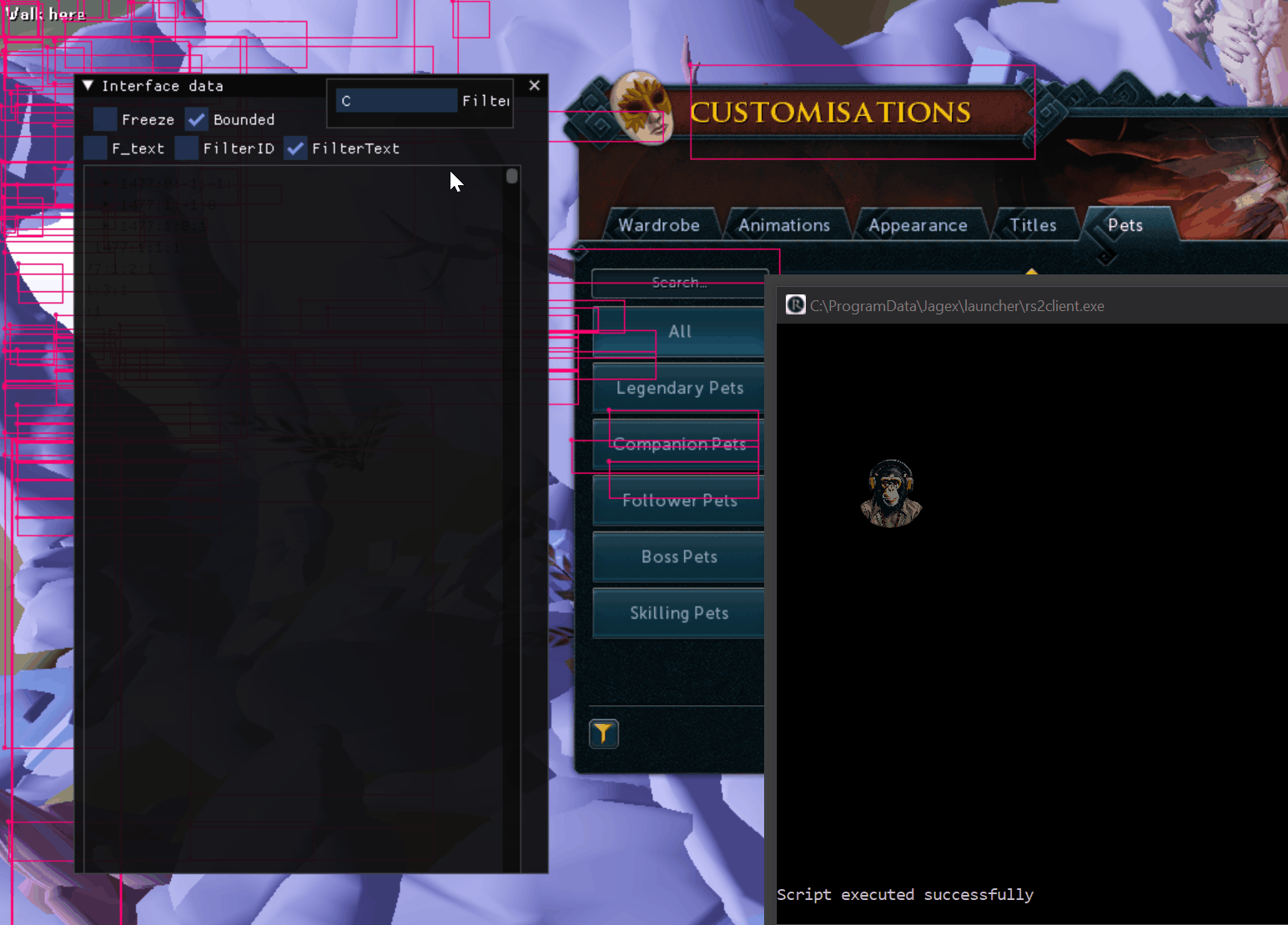Interfaces
Opening Interface Debugger
Opening Interface Debugger
You can open the interface debugger by performing the following actions on the debug menu
- Click
> - Click
Interfaces
Opening interface debug

Interface Options
Interface Options
This will now open up the interfaces window
Interface Options

Finding Interfaces
Finding Interfaces
The simplest way to find interfaces, is using the FilterText option.
Finding Interfaces by visible text

The console out for the above action is below:
Current: 1477:704:14:704 Index: 4
Full path: : 17fcdef9450 : 17fcddfe650 : 17fcddfa050 : 17fcddfe850 : 17fc69f8e10
Current IDs: 1477:704:14:704
Full IDs: { { 1477,25,-1,-1,0 }, { 1477,699,-1,25,0 }, { 1477,700,-1,699,0 }, { 1477,704,-1,700,0 }, { 1477,704,14,704,0 } }
Using Interface Values
Using Interface Values
Now that we have an interface ID, let's see how to use the values in your scripts.
--[[
We have to create a table of InterfaceComp5
for every single element in the full path
{
{ 1477,25,-1,-1,0 },
{ 1477,699,-1,25,0 },
{ 1477,700,-1,699,0 },
{ 1477,704,-1,700,0 },
{ 1477,704,14,704,0 }
}
]]
local customisationInterface = {
InterfaceComp5.new(1477,25,-1,-1,0),
InterfaceComp5.new(1477,699,-1,25,0),
InterfaceComp5.new(1477,700,-1,699,0),
InterfaceComp5.new(1477,704,-1,700,0),
InterfaceComp5.new(1477,704,14,704,0),
}
--[[
We will then call API.ScanForInterfaceTest2Get
with the table we created.
The first argument is a boolean which says
if we have to scan the child interfaces or not.
In this function, we're checking if we find any interfaces
with the hierarchy that we requested for and
returning true if we did.
]]
local function isCustomisationInterfacePresent()
local result = API.ScanForInterfaceTest2Get(true, customisationInterface)
if #result > 0 then
return true
else return false end
end